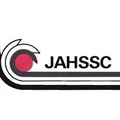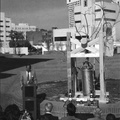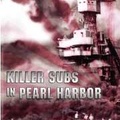The first Japanese to arrive in 1869 were two servants, T. Kamo and I. Nosaka, of the Kewen family living in El Molino Viejo, the Old Mill, previously owned by Mission San Gabriel in San Marino today. Their names are recorded in the 1870 Census. The late senior curator William Mason of the Los Angeles County Museum of Natural History believed they were members of the ill-fated Wakamatsu Tea and Silk Farm Colony near Sacramento.
By 1884, there were fewer than fifty Japanese in town, one of whom, Hamanosuke Shigeta, opened a restaurant at 340 East First Street, in a racially-mixed area of two blocks of First and Main Streets, the city’s hub. He was a cook who had jumped ship in San Diego, then the closest harbor to Los Angeles. Known as “Charlie Hama,” he was the first Japanese to go into business in 1884—the year Little Tokyo began its count toward a year-long centennial celebration in 1984. He did well enough to sell out two years later.
The first Japanese boarding house opened in 1888 on Alameda, south of East 1st Street—a beginning for many Japanese laborers who frequented the neighborhood where fruit trees and vineyards existed. (There is a grapefruit tree, believed to be from this era, thriving at the Japanese American Cultural and Community Center (JACCC) Plaza in Little Tokyo.)
By 1887, there were shoemakers, railroad workers, art goods and curio shops. Quaker Dairy, a restaurant at 304 East 1st Street, operated by “Sam” Sankichi Akita, served an American menu—usually beef stew, pie, and ice cream. It was then the only Japanese-owned business. He sold the business in 1901 and moved to 504 South Broadway to open Akira Bamboo Factory, where all manner of household items were made. In the 1900s, Broadway and Sixth Street was the southern edge of Downtown, which radiated from the Plaza for about five blocks. (W.M. Mason & J.A. McKinstry, The Japanese of Los Angeles 1869-1920, L.A. County Museum of Natural History, 1969.)

Postcard. Many people in front of the Tomio Department Store in Little Tokyo. (Gift of George Tomio, Japanese American National Museum. #92.76.15)
In 1897, the Japanese Association of Los Angeles—Rafu Nihonjin Kai—was formed to promote understanding and avoid friction between the Japanese and community-at-large. It also was a contact point for the Japanese consul at San Francisco. In Southern California, the Chuo Nikkeijin Kai—Central Japanese Association—was a powerful political and rival organization of Issei businessmen.
By 1910, Issei operated shops and cafes (5, 10, and 25 cent meals) along Main, Spring, and Broadway, the core streets of downtown L.A. Pictures of Bungoro Tani’s Bamboo Factory at 527 South Spring Street in 1904, and the Yamato Department Store at 635 South Broadway in 1908 appear in the Mason-McKinstry monograph, The Japanese of Los Angeles (1969). The Yamato was in business until the Evacuation.
In Nihonmachi, clustered around First and San Pedro, were tailors altering ready-made suits for short-statured men, Japanese book stores, a tempura restaurant, Japanese confectionery, mochigashi-ya, and Japanese language newspapers. A survivor, the newspaper Rafu Shimpo celebrated its 90th year in 1993, and its centennial in 2003. A refugee from the San Francisco Earthquake opened Little Tokyo’s first sushi-ya.
* This article was originally published in Nanka Nikkei Voices: Little Tokyo: Changing Times, Changing Faces (Volume 3) in 2004. It may not be reprinted or copied or quoted without permission from Japanese American Historical Society of Southern California.
© 2004 Harry K. Honda






